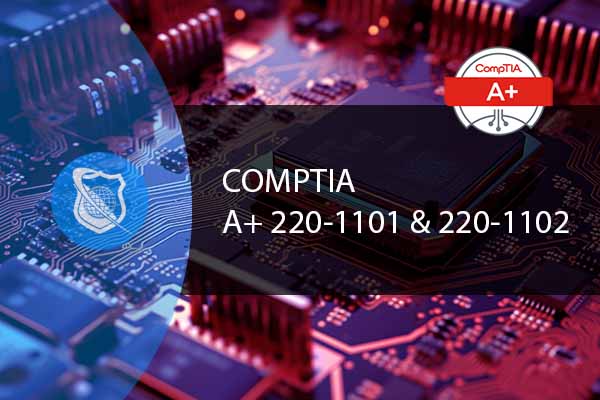Security threats are becoming more sophisticated and pervasive and zero trust security is becoming more of a norm. Traditional security measures, which often rely on perimeter-based defenses, are proving inadequate against these advanced threats. This has led to a paradigm shift in cybersecurity, with Zero Trust Security emerging as a critical framework for safeguarding IT environments. This blog explores the concept of Zero Trust Security, its importance in today’s IT landscape, and its numerous benefits.
What is Zero Trust Security?
Zero Trust Security is a strategic approach to cybersecurity that eliminates implicit trust in any entity — inside or outside the network perimeter. Instead, it requires verification of anything and everything trying to connect to its systems before granting access. The concept was coined by John Kindervag in 2010 and is based on the principle of “never trust, always verify.”
Importance of Zero Trust in Today’s IT Landscape
The traditional security model operated on the assumption that everything inside the network is trustworthy. However, this approach is flawed in the current digital age where threats can originate from anywhere, and insiders can often pose as significant a risk as external attackers. The shift to remote work, the adoption of cloud services, and the increase in mobile device usage have further blurred the boundaries of IT environments, making Zero Trust Security not just beneficial but essential for modern organizations.
Key Principles of Zero Trust Security
- Least Privilege Access: Granting users only the access they need to perform their job functions and nothing more.
- Microsegmentation: Dividing the network into small, secure zones to limit lateral movement of attackers within the network.
- Multi-factor Authentication (MFA): Requiring more than one piece of evidence to authenticate a user’s identity.
- Continuous Monitoring and Validation: Regularly verifying the security posture of all devices and users to ensure they meet the organization’s security standards.
Benefits of Zero Trust Security
Enhanced Security Posture: By adopting a Zero Trust model, organizations significantly reduce their attack surface, making it harder for attackers to gain access and move laterally across the network.
Improved Compliance: Zero Trust helps in meeting regulatory requirements by providing detailed logs and reports on user activities, access controls, and data usage.
Better Data Protection: With Zero Trust, sensitive data is segmented and encrypted, reducing the risk of data breaches and exfiltration.
Increased Visibility and Control: Zero Trust frameworks offer granular visibility and control over users and devices, allowing for more effective monitoring, detection, and response to threats.
Adaptability to Modern IT Environments: Zero Trust aligns with the cloud-first, mobile-first strategies of modern businesses, providing security that is both flexible and scalable.
Free CompTIA A+ Training
Ready to launch your IT career? Get a 7-day free trial of our top-rated CompTIA A+ training series. Dive into the world of technology with our Free CompTIA A+ Core Series, and take the first step towards success!
Implementing Zero Trust Security
Implementing Zero Trust Security is a multifaceted process that requires a strategic approach, encompassing changes in technology, policy, and culture within an organization. It’s about moving from a traditional, perimeter-based security model to one that is identity and resource-centric. Here’s a deeper dive into the steps and considerations involved in implementing Zero Trust Security.
1. Identify the Protect Surface
The first step in implementing Zero Trust is identifying what you need to protect. This could be data, assets, applications, services, or infrastructure critical to your organization’s operations. Understanding your protect surface helps in focusing your security measures on the most valuable and vulnerable parts of your organization.
2. Map the Transaction Flows
Understanding how data flows across your organization is crucial. This involves mapping out how users (both employees and customers), devices, and applications interact and how data moves between these entities. This step is vital for identifying where security controls should be applied and helps in understanding the context of access requests, which is a core principle of Zero Trust.
3. Architect a Zero Trust Network
Creating a Zero Trust architecture involves redesigning your network to support the principles of Zero Trust. This includes:
- Microsegmentation: Dividing the network into smaller, isolated segments to control access and movement within the network.
- Least Privilege Access Controls: Implementing strict access controls that grant users and devices the minimum levels of access—or privileges—needed to perform their tasks.
4. Implementing Zero Trust Principles
- Multi-factor Authentication (MFA): Implementing MFA to ensure that user identities are verified through multiple pieces of evidence before granting access.
- Encryption: Encrypting data at rest and in transit to protect it from unauthorized access.
- Continuous Monitoring and Verification: Regularly verifying the security posture of all devices and users to ensure they comply with the organization’s security policy. This includes real-time monitoring and automated response to security incidents.
5. Apply Zero Trust to All Network Environments
Zero Trust should be applied uniformly across all environments, including on-premises, cloud, and hybrid environments. This uniformity ensures that security policies and controls are consistent, regardless of where resources or users are located.
6. Embrace Security Automation and Orchestration
The dynamic nature of Zero Trust Security requires automation and orchestration to manage the complexity and scale of operations. Security automation helps in enforcing policies, managing access requests, and responding to threats in real-time. Orchestration tools can integrate different security solutions to work together seamlessly, enhancing overall security posture.
7. Educate and Train Staff
A successful Zero Trust implementation also involves cultural change within the organization. Educating and training staff about the principles of Zero Trust, why it’s being implemented, and how it affects their daily work is crucial. This ensures buy-in from all levels of the organization and helps in minimizing resistance to change.
8. Monitor, Maintain, and Improve
Zero Trust Security is not a “set it and forget it” approach. Continuous monitoring for new threats, regular reviews of access policies, and updates to security controls are essential to maintaining a robust Zero Trust environment. It’s also important to regularly audit and improve the Zero Trust architecture based on evolving threats and changing business requirements.
Conclusion on Implementation
Implementing Zero Trust Security is a comprehensive process that touches every aspect of an organization’s IT environment. It’s a strategic shift that requires careful planning, execution, and ongoing management. However, with the right approach and commitment, organizations can significantly enhance their security posture, reducing their vulnerability to cyber threats and ensuring the safety and integrity of their critical assets.

Information Security Manager Career Path
Propel your career forward and be part of an essential member of any management team as an Information Security Manager. This advanced training series is designed specifically for those want to move up into a management position in the IT field.
Challenges and Considerations
Implementing Zero Trust Security, while highly beneficial, comes with its own set of challenges and considerations. Organizations need to navigate these carefully to ensure a smooth transition and effective security posture. Here are some key challenges and considerations to keep in mind:
1. Legacy Systems and Infrastructure
Many organizations operate with legacy systems and infrastructure that were not designed with Zero Trust principles in mind. Integrating Zero Trust into these environments can be complex, requiring significant modifications or even complete overhauls of existing systems. This not only involves technical challenges but also substantial financial investments.
2. Cultural and Organizational Resistance
Zero Trust requires a shift in organizational culture and mindset from a traditional security approach to one that is more dynamic and adaptive. Employees and management may resist these changes due to the perceived inconvenience of stricter access controls and the continuous verification process. Overcoming this resistance requires effective communication, training, and demonstration of the value that Zero Trust adds to the organization.
3. Complexity in Implementation
The implementation of Zero Trust Security involves multiple components, including identity and access management (IAM), encryption, segmentation, and continuous monitoring, among others. Coordinating these components into a cohesive system can be complex and daunting, requiring detailed planning and skilled resources.
4. Interoperability and Integration Issues
Organizations typically use a wide range of security products and solutions from different vendors. Ensuring these different technologies work together seamlessly to support Zero Trust principles can be challenging. Interoperability and integration issues may arise, necessitating additional customization or the use of middleware solutions.
5. Scalability Concerns
As organizations grow, their IT environments become more complex. Implementing a Zero Trust model that can scale effectively with this growth is crucial. Scalability concerns include managing an increasing number of user identities, devices, and network transactions without compromising on security or performance.
6. Continuous Monitoring and Management
Zero Trust Security demands continuous monitoring and management of the network, which can be resource-intensive. Organizations must invest in automation and orchestration tools to manage the high volume of security data and alerts efficiently. However, selecting the right tools and integrating them into the existing security infrastructure can be challenging.
7. Budget and Resource Constraints
Implementing Zero Trust Security requires a significant investment in technology, training, and personnel. Organizations, especially small to medium-sized businesses, may face budget and resource constraints that hinder their ability to fully implement a Zero Trust architecture. Prioritizing investments and seeking cost-effective solutions is essential.
8. Regulatory and Compliance Implications
Organizations must consider the regulatory and compliance implications of implementing Zero Trust Security. The model’s emphasis on data protection and privacy aligns with many regulatory requirements, but organizations must ensure that their implementation of Zero Trust complies with all applicable laws and regulations.
Overcoming Challenges
To overcome these challenges, organizations can adopt a phased approach to Zero Trust implementation, focusing on critical assets and systems first and gradually expanding over time. Partnering with experienced vendors and consultants can also provide valuable expertise and guidance. Additionally, leveraging cloud-based services and solutions can help address scalability and integration challenges.
Conclusion on Challenges and Considerations
While the path to Zero Trust Security is fraught with challenges, careful planning, strategic investment, and a commitment to continuous improvement can help organizations navigate these obstacles successfully. The benefits of enhanced security, improved compliance, and better data protection make Zero Trust an essential strategy for organizations aiming to protect themselves against the evolving cyber threat landscape.
Conclusion
In conclusion, Zero Trust Security offers a comprehensive and effective framework to protect against the sophisticated cyber threats of today’s digital world. By adopting a Zero Trust model, organizations can enhance their security posture, protect sensitive data, and adapt to the evolving IT landscape. The journey towards Zero Trust may be complex, but the benefits far outweigh the challenges, making it a crucial investment for any forward-thinking organization.
Key Term Knowledge Base: Key Terms Related to Zero Trust Security
Understanding key terms related to Zero Trust Security is crucial for anyone working in or interested in cybersecurity. Zero Trust Security is a strategic approach that eliminates implicit trust in any entity inside or outside the network perimeter, requiring verification for everything trying to connect to its systems. With the rise of sophisticated security threats and the shift towards cloud-based and mobile-first strategies, Zero Trust Security has become essential for protecting IT environments. Here, we outline key terms that form the foundation of Zero Trust Security, aiding in a deeper understanding of its principles, implementation, and benefits.
| Term | Definition |
|---|---|
| Zero Trust Security | A cybersecurity strategy that eliminates implicit trust in any entity inside or outside the network perimeter, requiring verification for everything trying to connect to its systems. |
| Least Privilege Access | The principle of granting users only the access they need to perform their job functions, and nothing more. |
| Microsegmentation | The practice of dividing the network into small, secure zones to control access and limit lateral movement within the network. |
| Multi-factor Authentication (MFA) | A security system that requires more than one method of authentication from independent categories of credentials to verify the user’s identity for a login or other transaction. |
| Continuous Monitoring and Validation | The process of regularly verifying the security posture of all devices and users to ensure they meet the organization’s security standards. |
| Attack Surface | The total number of points where an unauthorized user can try to enter data to or extract data from an environment. |
| Data Exfiltration | The unauthorized transfer of data from a computer or other device. |
| Identity and Access Management (IAM) | A framework of policies and technologies ensuring that the right users have the appropriate access to technology resources. |
| Encryption | The process of converting information or data into a code, especially to prevent unauthorized access. |
| Security Posture | An organization’s overall security status of its software, networks, services, and information. |
| Regulatory Compliance | The goal that organizations aspire to achieve in their efforts to ensure that they are aware of and take steps to comply with relevant laws, policies, and regulations. |
| Sensitive Data | Information that must be protected from unauthorized access to safeguard the privacy or security of an individual or organization. |
| Granular Visibility | The ability to provide detailed visibility into the network, users, devices, and applications. |
| Security Automation | The automatic handling of security operations-related tasks without human intervention. |
| Security Orchestration | The process of integrating security tools and automating security processes for more efficient security operations. |
| Lateral Movement | The techniques that a cyber attacker uses to move through a network in search of key data and assets after gaining initial access. |
| Cloud-first Strategy | An organizational commitment to prioritize cloud-based services and solutions over traditional IT options. |
| Mobile-first Strategy | An approach to designing and developing websites and applications for mobile devices before making adaptations for desktop or laptop viewing. |
| Insider Threat | A malicious threat to an organization that comes from people within the organization, such as employees, former employees, contractors, or business associates. |
| Network Perimeter | The boundary between the private and locally managed side of a network, often protected by a firewall, and the public and untrusted side. |
| Cloud Services Adoption | The process by which organizations contract with third-party services for the delivery of computing services such as servers, storage, databases, networking, software, over the Cloud. |
| Remote Work Adoption | The practice of employees working outside of a traditional office environment, often from home or a location of their choosing, enabled by digital communication tools. |
This list provides a foundational understanding of Zero Trust Security and its related concepts, which are essential for navigating the complex landscape of modern cybersecurity.
FAQs in Relation to the Benefits of Zero Trust Security
What are the benefits of zero trust security?
Zero trust security offers numerous benefits, including enhanced protection against insider attacks and external threats, improved visibility through granular access controls, strengthened remote work, and posture, and efficient management of privileged access. By continuously monitoring user behavior and limiting access based on verified identities, organizations can significantly reduce their risk of data breaches.
How does zero trust improve security and user experience?
Zero trust model improves security by enforcing strict identity verification processes before granting network access. This approach reduces unauthorized access requests and entry points while ensuring only legitimate users gain entry. User experience is enhanced through Single Sign-On (SSO) implementation that simplifies authentication across multiple applications without compromising safety.
What are the 4 goals of zero trust?
The four primary goals of security concept of zero trust include: 1) verifying all users’ identities to ensure authorized access; 2) implementing least-privilege principles to limit excessive permissions; 3) utilizing micro-segmentation for network isolation and containment; and security breach and 4) continuous monitoring for real-time threat detection and response. These objectives help create a with a robust cybersecurity framework that minimizes risks associated with unauthorized intrusions.
What are the main challenges in implementing Zero Trust Security?
Implementing Zero Trust Security can be challenging due to factors like the complexity of existing IT infrastructures, the need for significant cultural change within organizations, and the integration of various security technologies. Legacy systems may not be compatible with Zero Trust principles, requiring upgrades or replacements. Additionally, achieving buy-in from all stakeholders and educating users about the new security measures are critical for successful implementation.
Can Zero Trust Security be applied to any organization?
Yes, Zero Trust Security can be applied to organizations of all sizes and industries. However, the specific approach and technologies used may vary based on the organization’s unique needs, infrastructure, and risk profile. Implementing Zero Trust requires careful planning, a step-by-step approach to address different areas of the network, and potentially significant investments in security technologies and training. With the right strategy, any organization can adopt Zero Trust principles to enhance its cybersecurity posture.

























